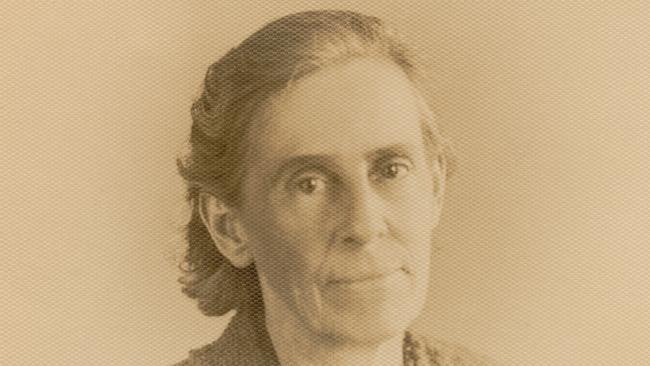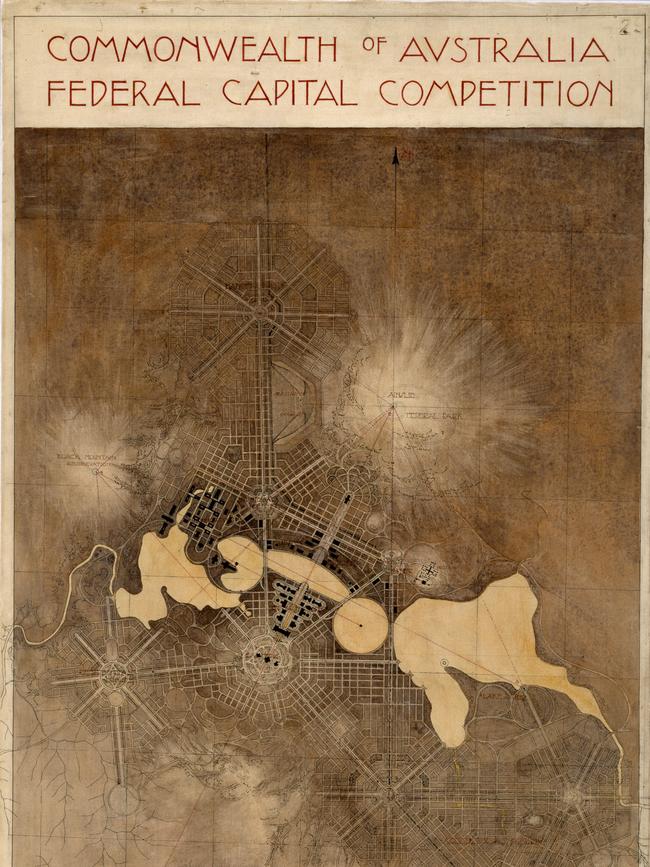Genius of the overlooked architect Marion Mahoney Griffin
She is known as the wife of Walter Burley Griffin and understudy to Frank Lloyd Wright, but now we can witness the unique gifts of Marion Mahoney Griffin.

Two years back, the National Archives of Australia began planning for an exhibition to celebrate the 150th anniversary of the birth of American architect Marion Mahony Griffin.
The wife of Chicago architect Walter Burley Griffin, Marion Mahony Griffin is acknowledged to have played a major role in the drawings the Griffins worked on in the cold mid-western winter of 1911, outlining their grand vision for the Australian capital.
The drawings for the plan, which was chosen by the judges in May 1912 in a 2-1 vote, are in the hands of the National Archives, which has carefully preserved them.
Born in Chicago on February 14, 1871, Marion was the second woman to complete a four-year degree in architecture at Boston’s Massachusetts Institute of Technology, in 1894, the first woman to become a registered architect in America, and was an active player in the office of Frank Lloyd Wright before she met Walter Burley Griffin (more than five years her junior), the work colleague who became her husband in 1911.
It was Marion who later that year urged new husband Walter to enter the competition for the design of the new Australian capital – a move that changed Australian history.
Celebrations were organised throughout Canberra last year to celebrate the growing interest in Marion in her own right.
These are continuing with a new exhibition at the Archives, Marion: the other Griffin, which opened in February and continues until May 8.

“Originally, we were just planning to show the drawings (of the Griffins’ plan for Canberra) for the year of celebrating Marion’s birthday in 2021,” National Archives curator Emily Catt told The Australian.
“But the more digging I did, the more it became apparent that Marion was a very impressive person in her own right and deserves to be appreciated.”
As she researched Marion’s history, Catt fell in love with Marion’s creativity and decided to delve deeper into her work.
With the exhibition deferred until this year because of Covid closures and lockdowns, Catt had more time to research Marion’s work and life, devoting nine months to searching in the collections in the Archives, and also the nearby National Library of Australia, which has an extensive collection of the Griffins’ work, which had been left in the Griffins’ office in Australia when Marion returned to Chicago in 1938 after Walter’s death in India.

“Architect, designer, idealist, trailblazer, Marion Mahony Griffin has often been overshadowed by her famous collaborators, Frank Lloyd Wright and Walter Burley Griffin,” the National Archives states in its promotional material for the exhibition.
“The exhibition reveals and celebrates the life of this extraordinary woman.”
Steven Fox, acting director of the Archives, says the exhibition provided an opportunity for the Archives to “once again display these iconic works (the Griffins’ design plans for Canberra)”.
“We are proud to tell the story of Marion Mahony Griffin’s legacy in Canberra as well as nationally and internationally.”
The exhibition contains works by and relating to Marion that have rarely been seen before including a full-faced photograph of her, taken in 1936 for her re-entry visa for Australia, for which she applied before she left to visit Walter in India – important given Marion’s insistence for most of her adult life on being photographed with her face side-on.
The exhibition builds on interest in Marion’s role over the past few years.
Marion’s role in the Sydney suburb of Castlecrag was celebrated in an exhibition at the Museum of Sydney that ran from November 2020 to last April and included a lecture on Marion by Griffin scholar Dr Anne Watson.
Last year saw other lectures on Marion in Canberra including one by Dr Watson and one by me at the National Capital Exhibition at Regatta Point, and a twice-postponed lecture this year on Marion at the National Library in February, which I also delivered.
Catt’s passion for Marion has produced yet another key exhibition that provides a visual argument for Marion’s broader creativity and energy.

At the core of the exhibition at the National Archives are the famous drawings the Griffins did of their plans for Canberra including the famous View from The Summit of Mount Ainslie, the view of the Griffin plan looking down from the mountain – a view that has proved to be stunningly accurate despite the remarkable fact that the Griffins had never been to Australia when it was drawn.
Equally as impressive are the cross-sectional drawings of the Griffins’ plan, which Marion did on silk against a cream wash, with buildings depicted in fine black ink that was also used to create a shimmering effect of the buildings being reflected in the lake – a key feature of the Griffins’ plan for Canberra, which was dismissed for years as being too expensive.
But by expanding the exhibition to other efforts of Marion, the visual representation of her work over several decades provides the basis for a much broader appreciation of her achievements.
They include Marion’s work in Melbourne, not least of which is a rarely seen drawing on silk of the Griffins’ plan for the Capitol Theatre in Swanston Street, details of the Griffins’ role in developing their “ideal suburb” of Castlecrag in Sydney, along with pictures and drawings of her work in Chicago before and after the Griffins moved to Australia in 1914.
Visitors to the exhibition walk in to see life-sized copies of a drawing Marion did on a school hallway in Chicago on a visit back to her home town in 1931, called Fairies Feeding the Herons.
Unable to photograph them because of Covid, the exhibition uses the rich photographs of the artwork, which is still on the walls of the George B. Armstrong School of International Studies, taken by Chicago fine art photographer James Prinz.
The photographs take visitors into the magical and highly creative world of Marion Mahony.
Catt points out that by including a broader array of Marion’s work, some common themes emerge, including her love of nature and the natural world (which is strongly reflected in the design drawings for Canberra) and her unique artistic skills using fine black ink as well as using subtle white paint to highlight her work.
Catt is reluctant to categorically declare that a stunning drawing of the Capitol Theatre, which is part of the Eric Milton Nicholls collection at the National Library, as being done by Marion – but a study of the work shows Marion’s fine detail and use of black ink.
While the drawing does not name Marion as its creator, it came from the Griffin architectural studio in Melbourne at the time.
“Doing work on silk is incredibly hard,” Catt says.
“Marion was an expert at it, as is shown in her drawings of the city of Canberra. It is very difficult to think that anyone else could have done that work. By looking at all the drawings, it is fascinating to see how Marion’s technique evolved over time.”
The exhibition also contains a video of a community play at Castlecrag, which was one of the many activities organised in the suburb by Marion, whose energy and strong sense of community brought it to life.
Catt says her research at the Archives and the National Library saw several moments when she gasped as she peeled back paper to reveal another delicately preserved work by Marion.
Unearthing immigration records at the Archives also shows an application made in 1942 by Marion for an extension of time for her re-entry visa to Australia.
While Marion never returned to Australia after leaving in 1938, the revelation that she had applied for an extension of her visa showed she never lost her passion for Australia, and her desire to come back to see her friends as well as the growing city of Canberra.
But this was not to be, with Marion ageing in poverty living with her niece in Chicago and suffering possibly from Alzheimer’s disease before she died in 1961.
She was never to see her grand hopes for a lake in Canberra, which was finally opened in 1964 by prime minister Robert Menzies, who insisted that it be named after her husband.
“I’m glad Marion’s story is out there,” says Catt. “People are now engaging with her story in 3D space and making visual connections with the lines of sight in the exhibition.”
The exhibition is open seven days a week with tours of the exhibition given in the mornings on Saturdays and Sundays. Admission is free.
Glenda Korporaal is the author
of Making Magic. The Marion Mahony Griffin Story, the biography of Marion Mahony Griffin, published in 2015.





To join the conversation, please log in. Don't have an account? Register
Join the conversation, you are commenting as Logout